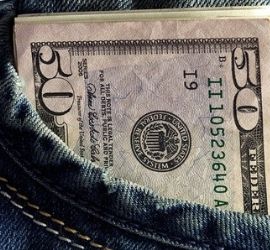What Is Cyclical Unemployment?
 Cyclical unemployment is a specific type of unemployment that results in temporary high unemployment rates. It is caused by a downturn in the business cycle with reduced demand for goods and labor.
Cyclical unemployment is a specific type of unemployment that results in temporary high unemployment rates. It is caused by a downturn in the business cycle with reduced demand for goods and labor.
Cyclical unemployment is a component of overall or aggregate unemployment. It occurs naturally during the cycles of economic upturn and downturn. Unemployment typically rises during recessions and declines during economic expansions. Limiting cyclical unemployment during recessions the primary goal for federal governments. They use various policy tools to stimulate the economy. Understanding recessions and unemployment is a major motivation behind the study of economics.
What Causes Cyclical Unemployment?
Cyclical unemployment is directly tied to the irregular ups and downs, or cyclical trends in economic cycles. The effects are measured by the changes in the gross domestic product (GDP). Most business cycles eventually reverse. That is, downturns eventually improve and reverse into an upturn.
However, during a downturn, consumer demand for goods and services drops. In turn, this leads to a reduction in production, lowering the need for workers and causing layoffs. Consumers then have less income, further feeding the downturn. The negative cycle feeds on itself causing companies to lay off more workers in attempts to maintain their profit margins.
Economists describe cyclical unemployment as the result of businesses not having enough demand for labor. As a result, companies cannot employ all those who are looking for work at that point within the business cycle. When demand for products and services drops, there tends to be a corresponding reduction in production to compensate. As the supply levels reduce, fewer employees are required to meet the lower standard of production volume. Those workers who are no longer needed are released, resulting in higher unemployment.
Stock Market Impact
Sometimes, a stock market crash is the cause of cyclical unemployment. Examples include the crash of 1929, the tech crash of 2000, and the financial crash of 2008. A bad market crash can cause a recession by instilling panic and loss of confidence in an economy. When this happens, businesses suffer a loss of net worth as stock prices plummet. When the market dives, so do the opportunities to raise capital for growth and expansion. Investors lose confidence in the financial markets—they begin selling their holdings to mitigate losses, and stock prices begin to fall. Consumers then tend to delay purchases, waiting to see if investor confidence returns or if prices continue falling. (Source: thebalance.com)
Example of Cyclical Unemployment
The financial crisis in 2008 is a relatively recent example of cyclical unemployment. In 2008, the housing bubble burst, and the Great Recession began. More and more borrowers failed to meet the mortgage debt obligations associated with their homes. Next, qualifications for new loans become more stringent and the demand for new construction rapidly declined.
The overall number of unemployed quickly rose. More borrowers were unable to maintain the mortgage payments on their homes. Properties were subject to foreclosure and demand for new construction ground to a halt. As a result, approximately 1.5 million workers in the construction field became unemployed.
Eventually, the economy recovered over the following years. As a result, the financial sector returned to profitability and began to make more loans. People began buying homes again or remodeling existing ones, causing real estate prices to climb. Construction jobs returned to meet this renewed demand in the housing sector, and cyclical unemployment declined. (Source: investopedia.com)
Cyclical Unemployment vs. Other Types
Cyclical unemployment is not the only class of unemployment recognized by economists. Other types include structural, seasonal, frictional, and institutional unemployment.
6 Types of Unemployment
- Structural Unemployment – This is not caused by the normal ups and downs of the business cycle. Structural unemployment is caused by fundamental shifts in the makeup of the economy. For example, jobs lost in the horse-drawn carriage sector once automobiles came to dominate. It is a mismatch between the supply and demand for certain skills in the labor market.
- Frictional Unemployment – Frictional unemployment is short-term joblessness caused by the process of leaving one job to start another. It includes the time needed to look for a new job and it naturally occurs even in a growing, stable economy. It is beneficial in that it indicates that workers are seeking better positions.
- Institutional Unemployment – Institutional unemployment consists of unemployment due to institutional interference. This includes high minimum wage laws, discriminatory hiring practices, or high rates of unionization. It is due to interferences with free-market conditions rather than the voluntary decisions of those unemployed
- Seasonal Unemployment – Seasonal unemployment occurs as demands shift from one season to the next. This category can include any workers whose jobs are dependent on a particular season. Official unemployment statistics will often be adjusted or smoothed, to account for seasonal unemployment. This is known as a seasonal adjustment. For example, construction workers tend to work less during the cold months. Retail stores hire seasonal workers during the winter to better manage seasonal holiday sales.
- Technological Unemployment – Technological Unemployment is caused when individuals lose their jobs due to technological advancement. Typically, it occurs with the introduction of new machinery, and it said to be temporary or short-lived.
- Disguised Unemployment – or hidden unemployment, refers to a portion of the labor force involved in redundant work with very minimal to no productivity. For example, a family farm with ten employees doing the same work.
Measuring the Cyclical Unemployment Rate
In most cases, several types of unemployment exist at the same time. Except for cyclical unemployment, the other classes can occur even at the peak ranges of business cycles. Even when the economy is said to be at or near full employment.
The cyclical unemployment rate is the difference between the natural unemployment rate and the current rate. Natural unemployment is due to workers coming and going or searching for other work. The current rate is the total amount of unemployed. It’s difficult to look at data and accurately determine why each person is unemployed. Economists have come up with three methods to estimate how much of the measured unemployment is cyclical.
- Business cycles – The first and most common method analyzes the business cycle. This method finds the unemployment rate at the peak of the business cycle. Next, it determines the unemployment rate at its lowest point in the business cycle. Subtracting the two, the difference is the cyclical unemployment rate.
- Aggregate rate minus other causes – Another method is to subtract the structural, frictional, and seasonal unemployment rates from the aggregate unemployment rate. The remainder is the cyclical unemployment rate.
- Analyze college graduates – The third method is to compare the unemployment rate for recent college graduates with the unemployment rate overall. If the recent graduate rate is similar to the overall rate, then most of the nation’s unemployment is cyclical. This reasoning is because recent college graduates have new skills and can move to wherever the jobs are. They have a very small chance of structural unemployment. Using this method, researchers found that most of the unemployment in 2011 was cyclical. (Source: thebalance.com)
Cyclical Unemployment Solutions
Because cyclical unemployment can spiral out of control, the federal government must usually step in to stop it. The first and easiest response is with expansionary monetary policy.
- Lower interest rates – The Federal Reserve (the Fed) can start lowering interest rates or use other innovative methods to influence the economy. Lowering rates makes loans and credit card payments cheaper, which, in turn, encourages spending and is designed to boost market confidence. Knowing that the Fed is taking action may restore the confidence needed to boost aggregate demand.
- Expansionary fiscal policies – are government actions such as increasing or decreasing spending and taxes. then the government must use expansionary fiscal policy. Expansionary policies take longer because Congress must vote for additional federal spending. This spending raises the budget deficit and re-ignites the bi-partisan debate on whether tax cuts or spending are more effective job creators.
- Extend unemployment benefits – A third option is for the government to extend unemployment benefits. According to some research, tax cuts are less effective in creating the demand needed to stop cyclical unemployment.
Up Next: FUTA Meaning – Federal Unemployment Tax Act
 FUTA Meaning: The Federal Unemployment Tax Act (FUTA) is federal legislation that imposes a payroll tax on any business with employees. The revenue it generates is allocated to state unemployment insurance agencies. These funds are used to pay unemployment benefits for people who are out of work. The Federal Unemployment Tax Act requires employers to file IRS Form 940 annually to report the paying of their FUTA taxes. IRS Form 940 generally must be filed in the first quarter of the year.
FUTA Meaning: The Federal Unemployment Tax Act (FUTA) is federal legislation that imposes a payroll tax on any business with employees. The revenue it generates is allocated to state unemployment insurance agencies. These funds are used to pay unemployment benefits for people who are out of work. The Federal Unemployment Tax Act requires employers to file IRS Form 940 annually to report the paying of their FUTA taxes. IRS Form 940 generally must be filed in the first quarter of the year.
FUTA is the federal part of the unemployment insurance program created by the Federal Unemployment Tax Act in 1939. Employers pay FUTA tax to fund the federal government’s part in overseeing each state’s unemployment or SUTA program.
The Federal Unemployment Tax Act (FUTA) was passed in 1939. It is a federal law that raises revenue to administer unemployment insurance and job service programs in every state. As directed by the Act, employers are required to pay annual or quarterly federal unemployment taxes; they make up a part of what is commonly known as payroll taxes. The funds in the account are used for unemployment compensation payments to workers who have lost their jobs. Although the FUTA payroll tax amount is based on employees’ wages, it is imposed on employers only, not their employees. In other words, it is not deducted from a worker’s wages. In this way, FUTA tax differs from other payroll taxes, such as Social Security tax, which is applied to both employer and employee.




